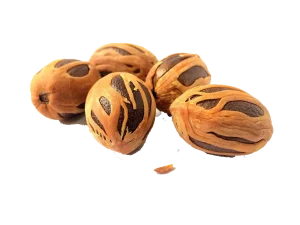Explores the fascinating world behind some of the world’s most expensive and unique items, from luxurious Matsusaka Wagyu beef and fragrant Indian nutmeg to the intricate process of making hot air balloons and the meticulous craftsmanship of bespoke English suits.
It highlights the dedication, tradition, and innovation involved in creating these exceptional products.
Key Points:

Amethyst from Uruguay:
The massive amethyst geodes mined in Aras, Uruguay, can be as heavy as 26 tons and cost nearly $1 million, despite amethyst being one of the most common minerals on Earth.
Matsusaka Wagyu:
Known for its incredibly low melting point, Matsusaka Wagyu is the result of meticulous care and ancient practices by farmers in Japan, with some cuts selling for as high as $530 for just 100g in Paris.


Nutmeg and Mace in India:
In Pachi, India, farmers harvest a special hybrid variety of nutmeg and mace, selling their mace for significantly higher prices due to its quality and their ability to cut out middlemen. Farmers can sell their mace for $50 per kg compared to the country’s lead producing City Kerala which sells mace for $35.
Anchovy Sauce in Italy:
The meticulous three-year process of making traditional Italian anchovy sauce, which can sell for $160 per liter, involves catching fresh anchovies, carefully preserving them in salt, and then pressing and aging the mixture.


Bespoke English Suits:
Savile Row in London is famous for its bespoke tailoring, where suits are crafted completely from scratch, taking months to produce and costing significantly more than off-the-rack options. Custom two-piece suit can cost nearly £6,000 and takes 4 months to make that’s more than 5 times times the price of a ready to wear suit.
Egyptian Cotton:
Despite its luxury status, the market for Egyptian cotton is fraught with authenticity issues, with a significant portion of products labeled as Egyptian cotton being inauthentic. Most expensive sheets cost between $600 and $800 even from less expensive retailers Egyptian cotton sheets regularly cost over $200 but the reputation and high prices have attracted countless imitations.


Hot Air Balloons:
The production of hot air balloons involves meticulous craftsmanship, from sewing the envelope to constructing the basket and assembling the burner system, justifying their high price tags. The smallest three person balloons can take 2 weeks to make with the final balloon cost at €30,000.
Q: What makes Matsusaka Wagyu beef so expensive?
A: The high cost of Matsusaka Wagyu beef is due to the extensive care, feeding, and traditional practices involved in raising the cows, resulting in beef with an exceptionally low melting point and high marbling.
Q: Why is nutmeg from Pachi, India, more expensive than others?
A: Nutmeg from Pachi, India, is more expensive due to the quality of the hybrid variety harvested there, which sells for higher prices thanks to the farmers’ ability to eliminate middlemen and directly control the market.
Q: How is traditional Italian anchovy sauce made?
A: Traditional Italian anchovy sauce is made from fresh anchovies preserved in salt and pressed over three years to extract the flavorful oil, resulting in a product that is both time-consuming and labor-intensive to produce.
Q: What differentiates bespoke suits made on Savile Row from other suits?
A: Bespoke suits from Savile Row are fully customized and crafted from scratch for each client, involving multiple fittings and the highest quality materials, distinguishing them from off-the-rack or made-to-measure suits.
Q: What are the challenges in the Egyptian cotton market?
A: The Egyptian cotton market faces challenges with authenticity, as a large percentage of products labeled as Egyptian cotton are not genuine, complicating trust and value in the market.
Q: What factors contribute to the high cost of hot air balloons?
A: The high cost of hot air balloons is attributed to the extensive labor, skill, and materials required to construct them, including the envelope, basket, and burner system, ensuring safety and durability.
These insights shed light on the intricate processes and dedication behind some of the world’s most luxurious and unique products, highlighting the value of craftsmanship, tradition, and authenticity.


